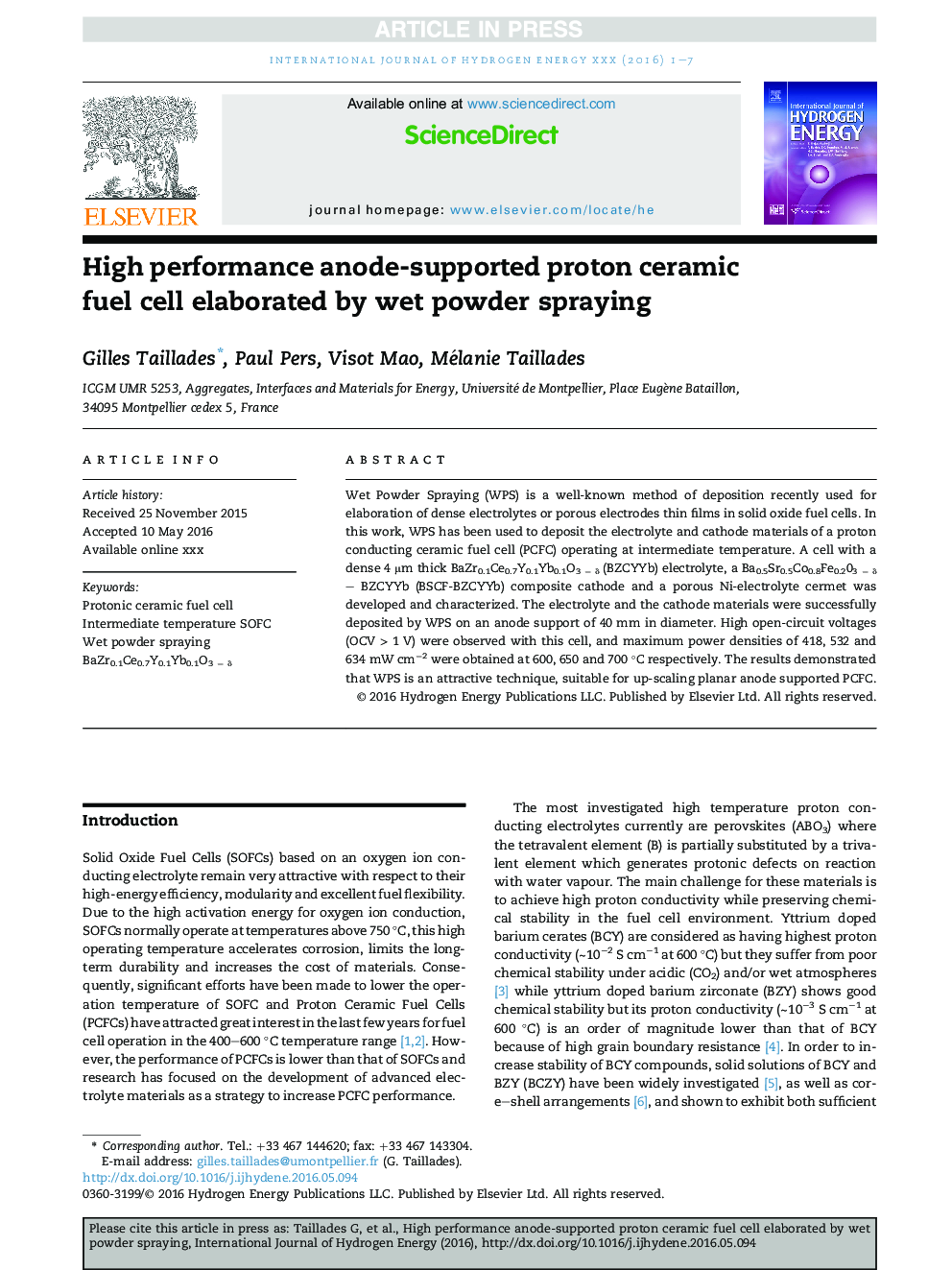| Article ID | Journal | Published Year | Pages | File Type |
|---|---|---|---|---|
| 7710315 | International Journal of Hydrogen Energy | 2016 | 7 Pages |
Abstract
Wet Powder Spraying (WPS) is a well-known method of deposition recently used for elaboration of dense electrolytes or porous electrodes thin films in solid oxide fuel cells. In this work, WPS has been used to deposit the electrolyte and cathode materials of a proton conducting ceramic fuel cell (PCFC) operating at intermediate temperature. A cell with a dense 4 μm thick BaZr0.1Ce0.7Y0.1Yb0.1O3 â δ (BZCYYb) electrolyte, a Ba0.5Sr0.5Co0.8Fe0.203 â δ - BZCYYb (BSCF-BZCYYb) composite cathode and a porous Ni-electrolyte cermet was developed and characterized. The electrolyte and the cathode materials were successfully deposited by WPS on an anode support of 40 mm in diameter. High open-circuit voltages (OCV > 1 V) were observed with this cell, and maximum power densities of 418, 532 and 634 mW cmâ2 were obtained at 600, 650 and 700 °C respectively. The results demonstrated that WPS is an attractive technique, suitable for up-scaling planar anode supported PCFC.
Related Topics
Physical Sciences and Engineering
Chemistry
Electrochemistry
Authors
Gilles Taillades, Paul Pers, Visot Mao, Mélanie Taillades,
